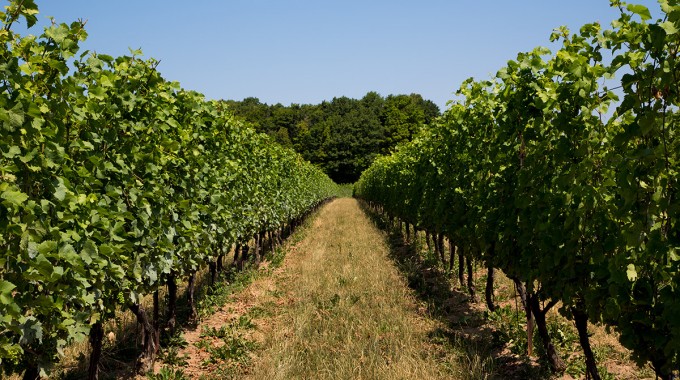Ter roir
Noun /ter ‘ war/
* The complete natural environment in which a particular wine is produced, including factors such as the soil, topography, and climate
* The characteristic taste and flavor imparted to a wine by the environment in which it is produced
So what are the types of environments, climates, soils and flavours that are imparted? They seem endless, and indeed they may be. When you taste a wine you are experiencing a myriad of flavours and characteristics that will all lend to the ability to identify the wine without having to look at the label. Listed below are some characteristics of wines and locations that will help you determine what you like and what you don’t like. As you develop a sense for what your palate prefers, your adventures by the glass can begin. I say, down with staple wine choices, as variety is the spice of life! Here is to adventuring by the glass and being informed consumers… you never know how good the wine you aren’t tasting is.
Many wine consumers are familiar with the intensity of the flavour profile on a wine. This has a lot to do with the varietal (or type of wine: Cabernet Sauvignon, Syrah, Riesling, etc), and the geographic location of where those grapes were grown. More specifically, the country or region will have an identifiable and classifiable climate and soil type.There are three major classifications for climates that are significant when discussing fine wine.
* Continental – this climate does not have a large body of water to significantly influence temperature or humidity, does have major temperature variations between seasons and raises concerns of frost and hail as extreme weather conditions – think Burgundy
* Maritime – this climate has a large body of water that moderates temperature, is privy to a long growing season and raises concerns of rain and humidity as extreme weather conditions – think Bordeaux
* Mediterranean – this climate has very warm and moderate temperatures, benefits from a long growing season and minimal rainfall which does lead to concerns of drought – think Napa Valley
The differences between these climates have a lot to do with what the wine tastes like. Specifically how much flavour, alcohol, sugar, tannin, and acid is present in the bottle. As you taste your way around the world make mental notes of what each wine tastes like and think about where it is from. We all know that a Chilean red wine is going to be a very big wine with good alcohol and deep intensity. We also know that Niagara Riesling will have big minerality with racy acidity. It is a matter of memorization, or wine reviews to get an idea of how each bottle will taste.
Easy hints to help you find wine that is similar to what you typically enjoy are big reds from hot regions, earthy red wines from the old world, bright fruitful red wines from the new world, light reds and bright whites from cooler climates, and high alcohol wines from warmer regions. I know that is quick and dirty, but with future posts on wine regions I will go more in-depth on the consistent wine characteristics from each place.
Terroir also has a lot to do with the minerality in the soils that the vines grow in. In order to grow grapes for fine wine the soil must give excellent drainage, nutrients to the grapes, and enable the vines to develop very deep root systems. The deeper the root system, the more minerality and depth to the wine, the more likely that you’ll be able to find where the wine hails from. Popular soil types for growing wine in can range drastically from vineyard to vineyard. Take Niagara as an example. Our soils are the result of several ice ages; glaciers have moved rock from Northern Ontario and spread them throughout what we now consider our wine growing region. In one vineyard the expression could be from a notable bed of limestone that imparts a chalky and citrus flavour to the wine. In the vineyard next door the vines may show mineral qualities associated with granite and loam. Some of the soils that are consistently found throughout international wine growing regions include Limestone, Clay, Schist, Granite, Chalk, Sand, Gravel and Slate. Amongst the easiest to identify is Limestone which reveals itself as a citrus note with a chalky finish. As a Riesling (a wine commonly grown in Limestone) ages it will turn the Limestone minerality into a petrol note.
With a basic understanding of terroir, I hope you will seek to find similarities and differences in your wines. It isn’t only about varietal when you pick from a specific region. On the Italy rack at the LCBO the Sangiovese (or Chianti as it is called because of the region it is grown in) will be a little different in every bottle, and just because you like one doesn’t mean there isn’t a better version just a few bottles down.
As I continue to write for Naturally in Niagara, I will include bits of information regarding soil and climate. Keep this post in mind, and remember to make mental notes of each region as you taste their vinous offerings. This will help you decide on bottles as you travel through your local wine shop or navigate your best bistro’s wine list!




Leave a Comment